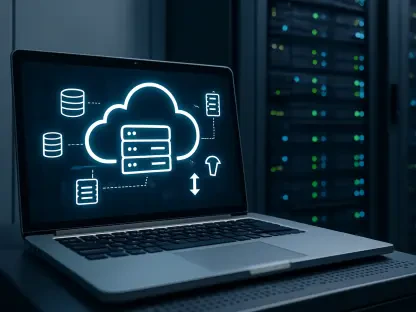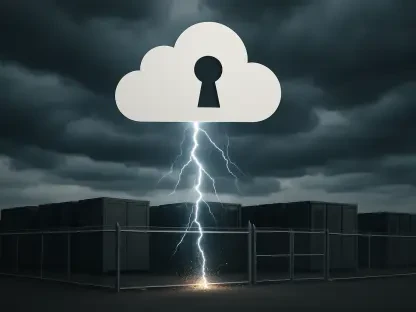Setting the Stage for Remote Work Security Challenges
Imagine a global workforce operating from coffee shops, home offices, and shared coworking spaces, accessing sensitive corporate data over unsecured networks, a scenario that was once a rarity but has now become the norm for millions of employees worldwide. Remote work has reshaped how organizations function, yet this shift has unveiled a pressing concern: the vulnerability of distributed environments to cyber threats. As companies embrace flexibility, the question looms—can technology keep pace with the escalating risks of phishing, malware, and data breaches in remote settings? This review dives into the cybersecurity tools and strategies designed to protect remote workforces, assessing their effectiveness in safeguarding decentralized operations.
Analyzing the Core Risks of Remote Work Environments
Remote work introduces a unique set of cybersecurity challenges, primarily due to the decentralized nature of operations. Unlike traditional office setups with controlled networks and physical oversight, remote environments rely on diverse devices and connections, often outside the direct control of IT departments. This setup significantly broadens the attack surface, making organizations more susceptible to threats like ransomware and data interception, especially when employees use personal devices or public Wi-Fi.
A critical issue lies in the human element, where a lack of awareness or non-compliance with security protocols can undermine even the most advanced systems. Employees working from public spaces may inadvertently expose sensitive information through visible screens or unsecured communications. Such behavioral risks highlight the need for technology to address not only technical vulnerabilities but also the gaps in user education and policy adherence.
Key Features of Remote Work Cybersecurity Solutions
Zero Trust Architecture as a Foundational Defense
One of the standout technologies in securing remote work is Zero Trust architecture, a model that operates on the principle of “never trust, always verify.” This approach ensures that every user and device attempting to access corporate resources is authenticated and authorized, regardless of location. By eliminating implicit trust, Zero Trust minimizes the risk of lateral movement by attackers within a network, a common issue in decentralized setups.
Implementation of this framework often integrates with cloud-based systems, allowing scalability and adaptability for organizations of varying sizes. Reports from industry leaders indicate that companies adopting Zero Trust have seen a marked reduction in unauthorized access incidents. However, the complexity of deploying such a system can pose challenges, particularly for smaller enterprises with limited technical expertise.
Multi-Factor Authentication for Enhanced Access Control
Another pivotal feature in remote work security is Multi-Factor Authentication (MFA), which adds layers of verification beyond traditional passwords. By requiring a combination of something the user knows, has, and is—such as a password, a mobile device code, and biometric data—MFA significantly reduces the likelihood of compromised credentials leading to breaches. This technology has become a staple in securing remote access to corporate systems.
The accessibility of MFA solutions has improved, with many providers offering user-friendly interfaces and integration with existing platforms. For remote workers, this means minimal disruption to workflows while ensuring robust protection. Yet, adoption remains inconsistent, especially among smaller firms where budget constraints may limit investment in such tools.
AI-Powered Threat Detection and Response
Artificial Intelligence (AI) has emerged as a game-changer in cybersecurity for remote environments, offering proactive threat detection and response capabilities. AI tools analyze vast amounts of data in real-time to identify anomalies that could indicate a cyberattack, such as unusual login patterns or suspicious file activity. This capability is particularly valuable for distributed workforces where monitoring every endpoint manually is impractical.
Beyond detection, AI also automates responses like isolating compromised devices or deploying patches, reducing the window of opportunity for attackers. Tailored phishing simulations driven by AI further help in training employees to recognize and avoid social engineering tactics. While highly effective, the cost and complexity of AI solutions can be a barrier for some organizations, necessitating more accessible options in the market.
Performance and Real-World Impact
The performance of these cybersecurity technologies in remote work settings varies based on implementation and organizational context. Large enterprises, with substantial resources, often report success with comprehensive setups like the Mayo Clinic’s model, which combines encrypted company-issued devices with strict access controls. Such implementations demonstrate how a well-resourced strategy can mitigate risks effectively, maintaining operational integrity even in distributed environments.
In contrast, small and medium-sized enterprises (SMEs) frequently struggle to achieve similar outcomes due to limited budgets and expertise. While solutions like MFA and cloud-based endpoint protection are within reach, the lack of tailored support often results in partial adoption or misconfiguration, leaving gaps in defense. This disparity underscores a critical performance issue: the need for scalable, user-friendly tools that cater to diverse organizational needs.
Case studies reveal that consistent employee training amplifies the effectiveness of these technologies. Organizations that pair technical solutions with regular cybersecurity awareness programs tend to experience fewer incidents related to human error. This synergy between technology and education appears to be a key determinant of success in securing remote work, suggesting that performance hinges on a holistic approach rather than standalone tools.
Obstacles and Limitations in Deployment
Despite the promise of advanced cybersecurity solutions, several obstacles hinder their widespread effectiveness in remote work contexts. A primary limitation is the absence of formal security policies in many organizations, which leaves employees without clear guidelines on safe practices. Without a structured framework, even sophisticated tools like Zero Trust can fail to deliver optimal results due to inconsistent application.
Resource constraints further complicate the landscape, particularly for SMEs that may lack the financial or technical capacity to implement comprehensive systems. The tension between security investments and business priorities at the leadership level often results in deferred upgrades or minimalistic approaches, exposing organizations to preventable risks. Addressing this requires not only affordable solutions but also a shift in mindset to view security as a strategic necessity.
Additionally, the balance between security and usability remains a persistent challenge. Overly stringent measures can frustrate employees, leading to workarounds that bypass protections, while lenient policies risk exposure to threats. Striking this balance demands continuous refinement of technologies and policies to align with both security goals and operational convenience, a process that many organizations are still navigating.
Reflecting on the State of Remote Work Cybersecurity
Looking back, this review illuminated the multifaceted nature of securing remote work through technology, revealing both remarkable advancements and persistent gaps. Zero Trust architecture, MFA, and AI-driven tools stood out as powerful defenses against the expanded attack surface of distributed environments, with real-world applications showcasing their potential when paired with robust training programs. However, disparities in adoption between large enterprises and SMEs, alongside policy and leadership challenges, highlighted that technology alone cannot resolve all vulnerabilities.
Moving forward, actionable steps include prioritizing the development of affordable, scalable security solutions that cater to smaller organizations without compromising on efficacy. Industry stakeholders should focus on simplifying deployment processes and enhancing user education to address human factors effectively. Additionally, fostering a culture of cybersecurity at the board level will be crucial to ensure that security investments are not sidelined by short-term business considerations.
A future consideration lies in leveraging emerging innovations like automation to further streamline threat management, reducing the burden on IT teams and employees alike. Collaborative efforts between technology providers, policymakers, and organizations can help standardize best practices, ensuring that remote work remains a viable and secure model for the long term. This path forward offers a blueprint for transforming the challenges of today into the safeguards of tomorrow.









